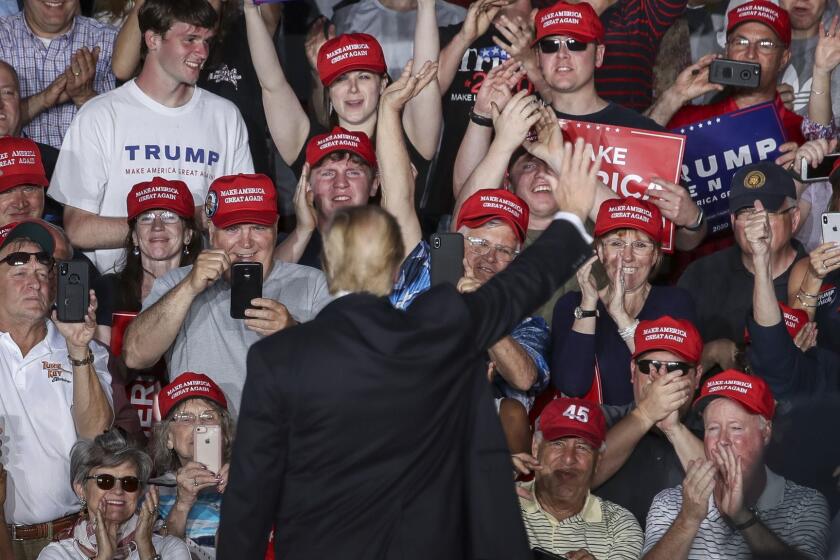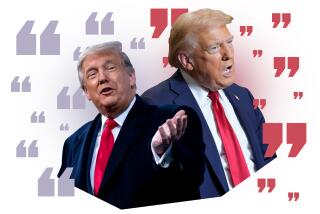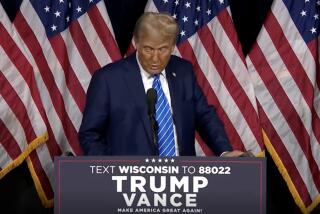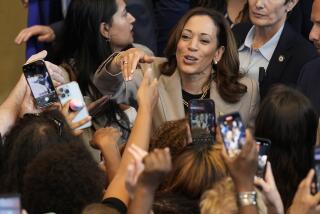Opinion: The weird and disturbing rationale for Trump’s prescription drug price controls
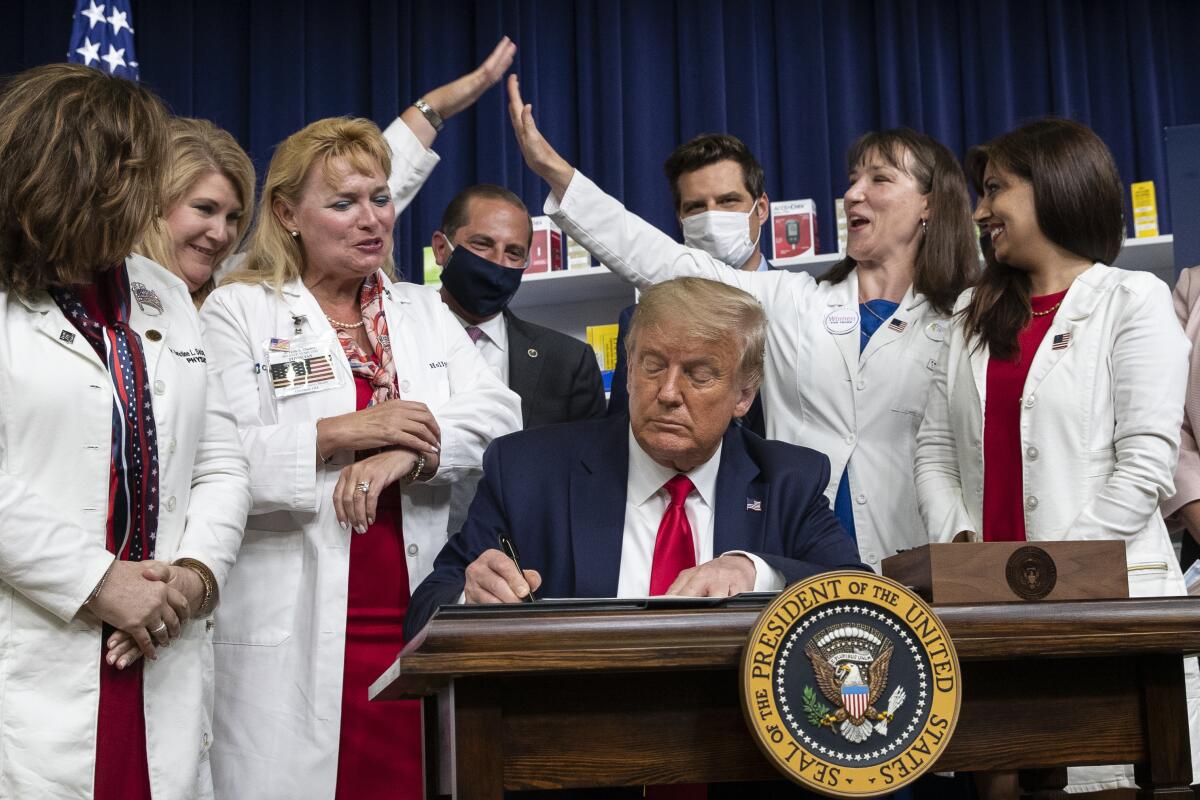
If the Trump administration succeeds in lowering the prices of some popular prescription drugs this year, you can apparently thank the Supreme Court and its decision to restore the Deferred Action for Childhood Arrivals program.
This was the bizarre and disturbing position that President Trump advanced Monday when chatting briefly with reporters on the White House lawn. The president signed four executive orders last week that aim to slash the premium prices that Americans pay for insulin and other medications, a laudable goal that has met with stiff resistance from elements of the pharmaceutical industry. Although all of these proposals have been in the works for years, they have foundered in the face of industry objections and, more notably, serious implementation challenges.
Which is not to say that the ideas are bad. The goals are solid, even if the means to reach them are debatable. The issue is the legal basis Trump is citing for them.
Trump and his staunch supporters are pinning their hopes on a silent majority that polls aren’t capturing.
One order aims to force insurance companies to pass along to consumers the rebates their agents negotiate with drugmakers, addressing one of the thorniest problems in the effort to hold down drug costs. The problem is finding a way to do so without ending the rebate system that, according to some analysts, lowers insurance premiums — particularly in the Medicare Part D program for seniors. That’s the main reason the administration abruptly pulled the proposal from consideration last year.
Other orders would allow drugs to be imported if they’re produced in countries with regulatory systems deemed safe by the U.S., or reimported from foreign countries if they were produced here; permit low-income Americans to buy deeply discounted insulin and injectable epinephrine from federally supported health centers; and require certain drugs to sell for the same price in the U.S. as they sell for in other major developed nations (although drugmakers would have a month to negotiate an alternative way to lower prices).
I’ll just note here that the distance between these proposals and the usual free-market-centric Republican approach is vast. So vast, in fact, that the Wall Street Journal’s editorial board, which spends much of its time apologizing for Trump’s policies, blasted the executive orders Monday in a piece titled “Trump’s Drug Price Panic.” Although I don’t share the Journal board’s abundant faith in free-market forces to cure the manifest ills in the healthcare industry, I do share its skepticism about the effectiveness of price controls.
But even if you think these four orders are the best thing Trump has ever done on healthcare, you have to be disturbed by Trump’s explanation for why he’s moving ahead now.
Commenting on how he had the authority to control those prices unilaterally, without Congress passing a law or an agency completing a formal rulemaking process, Trump said, “I was given that right because of the DACA decision. The DACA decision allowed me to do things that some people thought the president didn’t have the right to do. I was given that right. Drug prices will be coming down very, very substantially. No other president has been allowed to do that. No other president has been able to do that.”
Yeah, no. Trump has tried to snatch victory out of the jaws of the court’s DACA ruling, but he’s dreaming. Granted, it’s a dream shared by some influential conservative thinkers, but there’s no basis for it in the ruling.
The court found that DACA was more than just an administrative decision not to enforce immigration law against a group of people brought into this country as children by their parents. It also offered these “Dreamers” benefits, such as the ability to obtain work permits. Ending DACA, therefore, required reversing a substantive policy that had been in place and relied upon by hundreds of thousands of Americans for years. That sort of policy change is governed by the Administrative Procedures Act, which bars actions that are arbitrary, capricious and procedurally deficient. Because the Trump administration did not follow the APA in rescinding DACA, as in so many of its actions, its decision was invalid.
Californians need homes and houses of worship have excess land.
Trump turns the court’s reasoning on its head. Because the court focused on the legality of Trump’s reversal of DACA instead of President Obama’s adoption of the program, he seems to believe he can issue whatever orders he wants, and any future president attempting to undo what he’s done will have to jump through months or years of procedural hoops under the APA.
That’s hogwash. As Harry Litman ably explained in The Times, executive orders that launch substantive new programs have to comply with the APA, and anyone damaged by a Trump order can sue to stop it under that law. Again, this administration has lost countless APA lawsuits; you would think that it would know by now what the law requires.
Trump has suggested several times that he’ll use the imaginary shield he sees in the DACA ruling to do all sorts of things. Cutting drug prices is a noble purpose, and the president was right to make it one of his key goals. But he should pursue it in a legal way that can survive the test of time.
More to Read
A cure for the common opinion
Get thought-provoking perspectives with our weekly newsletter.
You may occasionally receive promotional content from the Los Angeles Times.
